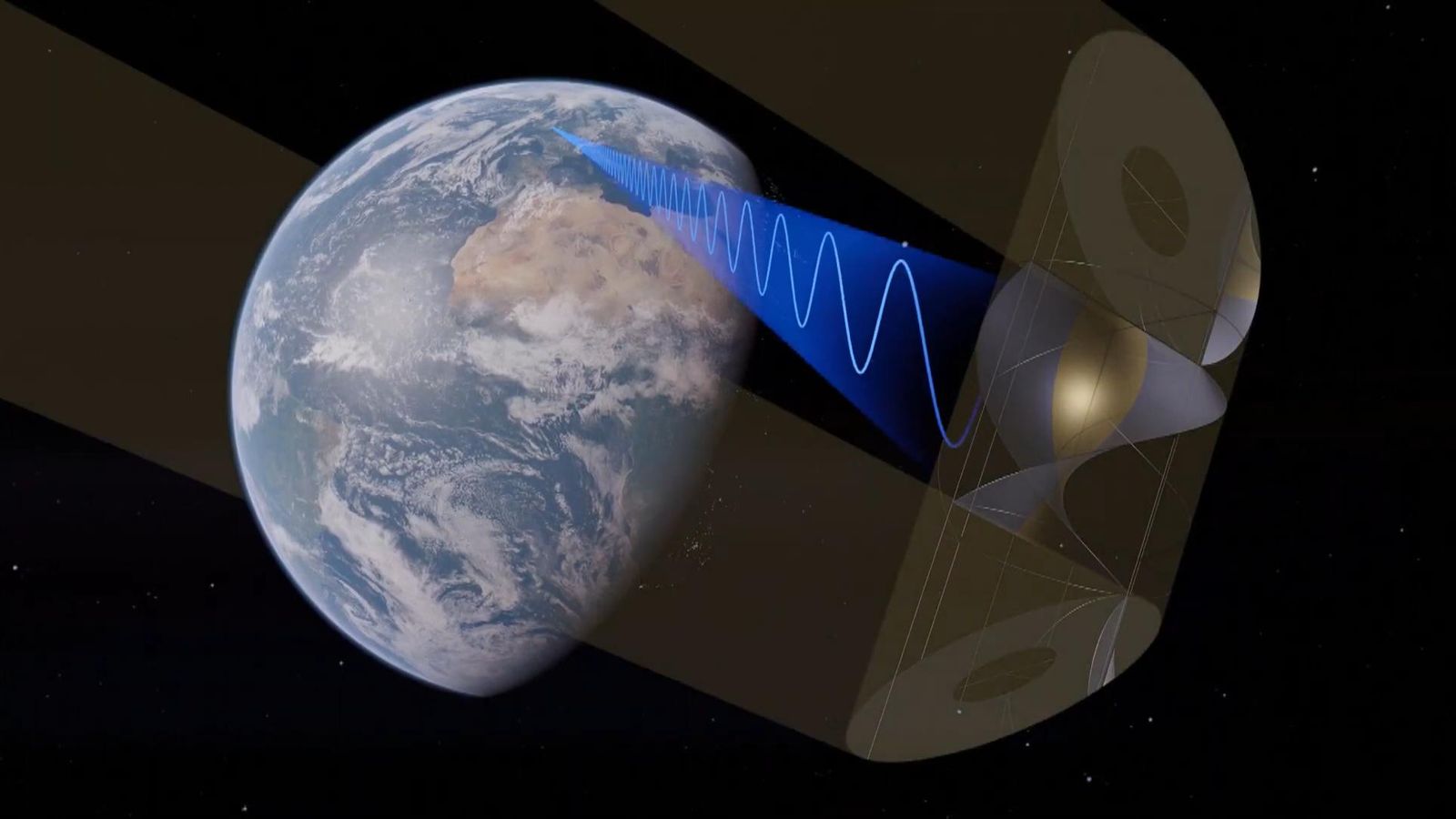Wait, isn’t this the plot to Die Another Day? It’s going to transpire that this is a high energy death ray built by the Chinese and only an invisible cloaking car can’t stop it.
It was North Korea, but yeah it does sound familiar! I wonder if it could be used to insta cook a pot noodle…
This is the best summary I could come up with:
But its super-efficient design for harvesting constant sunlight - called CASSIOPeiA - requires the system to rotate towards the sun, whatever its position, while still sending power to a fixed receiver on the ground.
That’s now been shown to work for the first time at Queen’s University Belfast, with a wireless beam successfully “steered” across a lab to turn on a light.
Solar panels capture 13 times more energy in space than they do on the ground because the light intensity is higher and there’s no atmosphere, clouds or night.
Even though some energy would be lost by the time it is beamed back to Earth and connected to the electricity grid, it would still far outstrip solar generation on the ground.
But it’s the production of power around the clock that makes space-based solar energy so attractive for providing a “baseload” to back up ground-based renewables.
In the UK the government, university researchers and companies including EDF and the National Grid have formed the Space Energy Initiative to accelerate plans to put a solar power station in orbit.
The original article contains 693 words, the summary contains 179 words. Saved 74%. I’m a bot and I’m open source!
Can someone with a bit of orbital knowledge ELI5 for me here. Well maybe bit more then 5.
But I cannot help but wonder how pointing a beam in a lab. Prooves the ability to do so at a single point on spinning plannet while while able to see the sun for 24hrs.
I really am no expert or even mildly informed. But surely geostationary is not high enough to have 24hr vision of the sun. If we need to be higher then the complexity of keeping a single satellite pointed at a stationary point on earth. Becomes expensive fuel wise.
Surely any solution would need multiple satellites. Maybe one at an earth sun L point sending the power to a geostationary relay point? Or 3
The higher up you are the longer it takes for the sun to set so you get a longer day. You can see more of the earth. Or the earth appears smaller, so is less likely to be blocking the sun. The higher you go the easier it is to always be able to point at the sun.
A geostationary orbit has a 42, 000 km radius, the earth has a 6000 km radius. It’s like looking at a 30 cm ball from 2.1 m meters away. Not much will be obscured from your view. It like a ball on the floor at the opposite end of a room, you would expect it to block the view out the window.
There may be times when the sun is eclipsed by the earth, but this will be infrequent. If the satellite isn’t in the same plane as the earth and sun, then this will be unlikely. The UK is relatively far north. So the satellite would be looking ‘over’ the earth during night to see the sun. The satellite would only be a small fraction of it total distance to the sun further away at night. So the power generation impact will be minimal. The elliptical orbit of the earth around the sun would be a bigger factor.
To complete that good answer, satellites in GEO will experience eclipses 2x21 days per year (around March and September). The eclipse duration during these periods will vary from 0 to 70minutes and then down to 0 again, with one eclipse per day, around midnight.
So your solar plant in space will work 100% of the time 320+ days a year, and will have a small down time that can be up to an hour in the middle of the night otherwise. Not perfect but actually very manageable with a little bit of storage on the ground.
Overall, the main concern with these systems is the total cost, including launch cost. It is hard to tell if it will be competitive with solar + battery on the ground.
Thank you. Fantastic explanation.
There may be times when the sun is eclipsed by the earth, but this will be infrequent.
This will happen once per day lol. For a geostationary orbit anyway, as the orbital period is 24 hours.
The point, as you mentioned before, is that the nighttime/eclipse part of this period will be very short and the day very long. Our night lasts hours, a geostationary satellite’s night is minutes (maybe a little over 1 hour for the longest ones).
This website calculates eclipse periods for satellites: https://www.satellite-calculations.com/Satellite/satellite_eclipse.htm Apparently it’s a seasonal thing, like 3 months you get daily eclipses, 3 months you get no eclipse, then another 3 months on and another 3 off. The 3 months with eclipses are the around the equinoxes, so Feb-Apr and Aug-Oct.
The Equator isn’t in line with the angle the earth revolves around the sun.
Yup that’s what I gathered from this. Literally had the “duh” realisation as I was writing that comment.
Eclipses still happen once per day, when they happen, it’s just also seasonal with no eclipses in the summer and winter.





